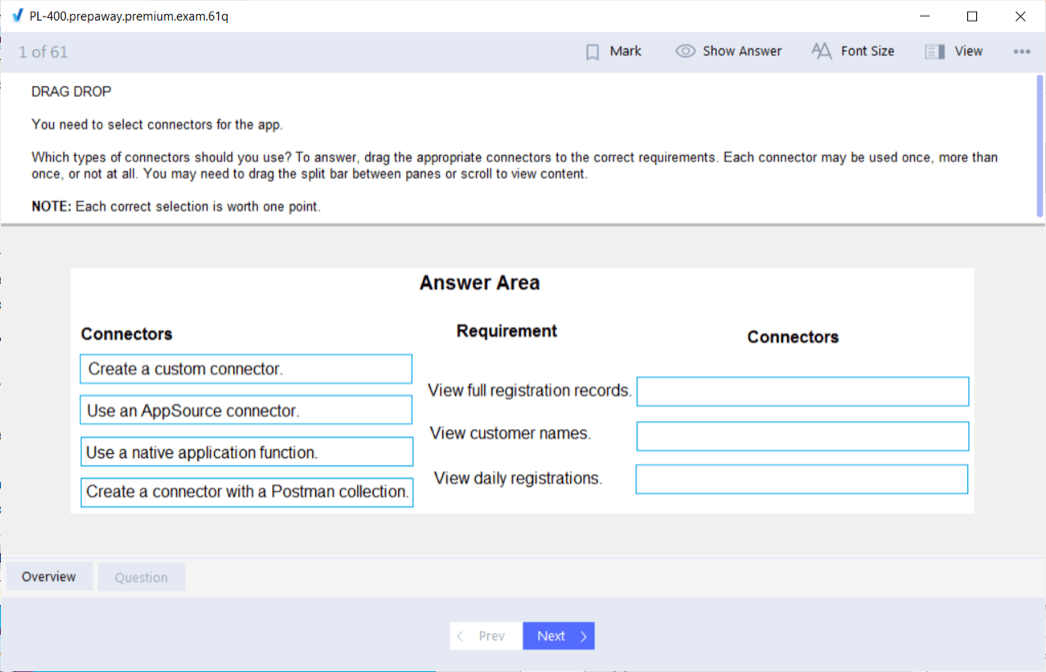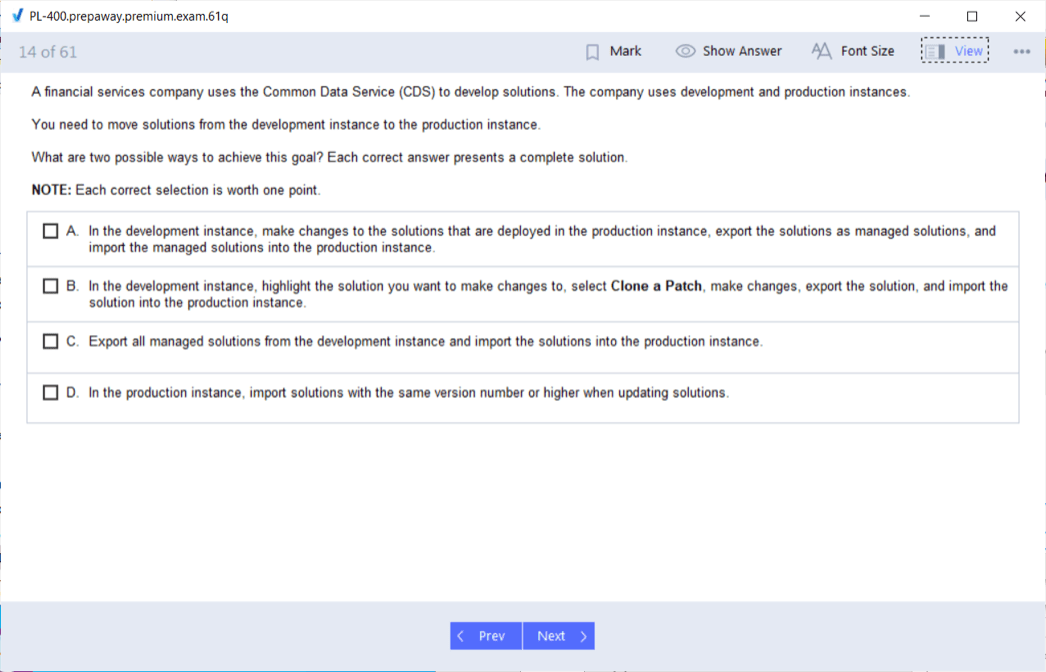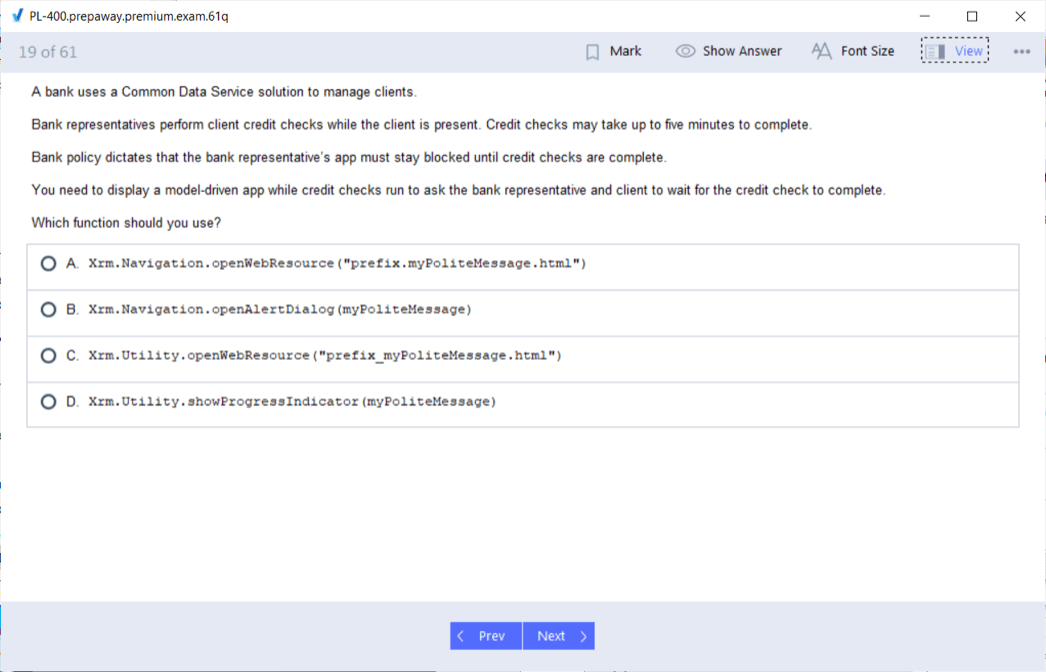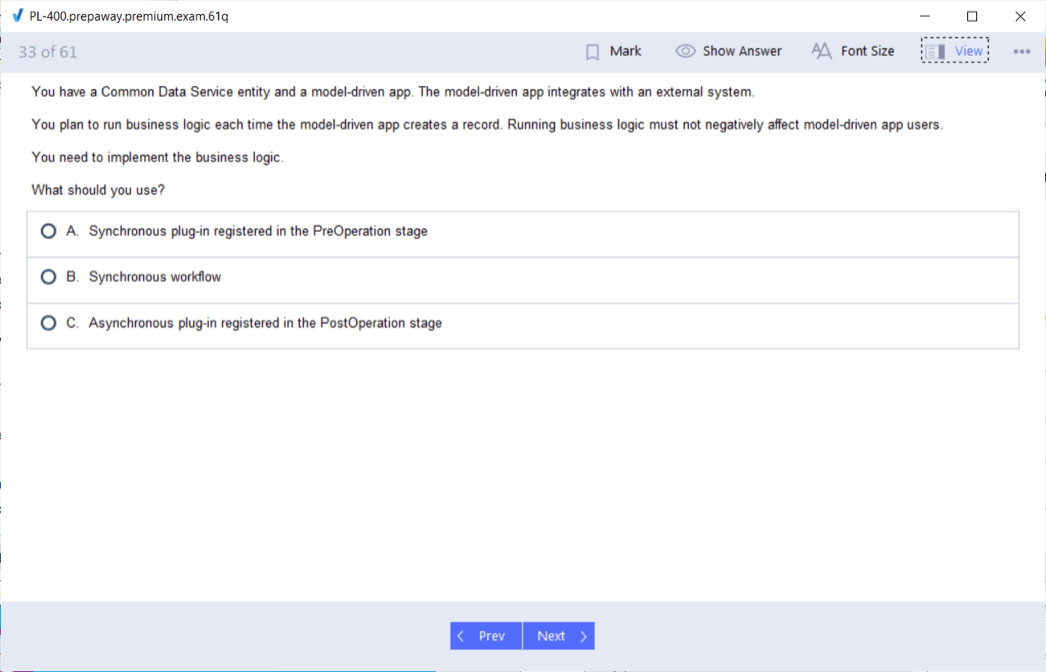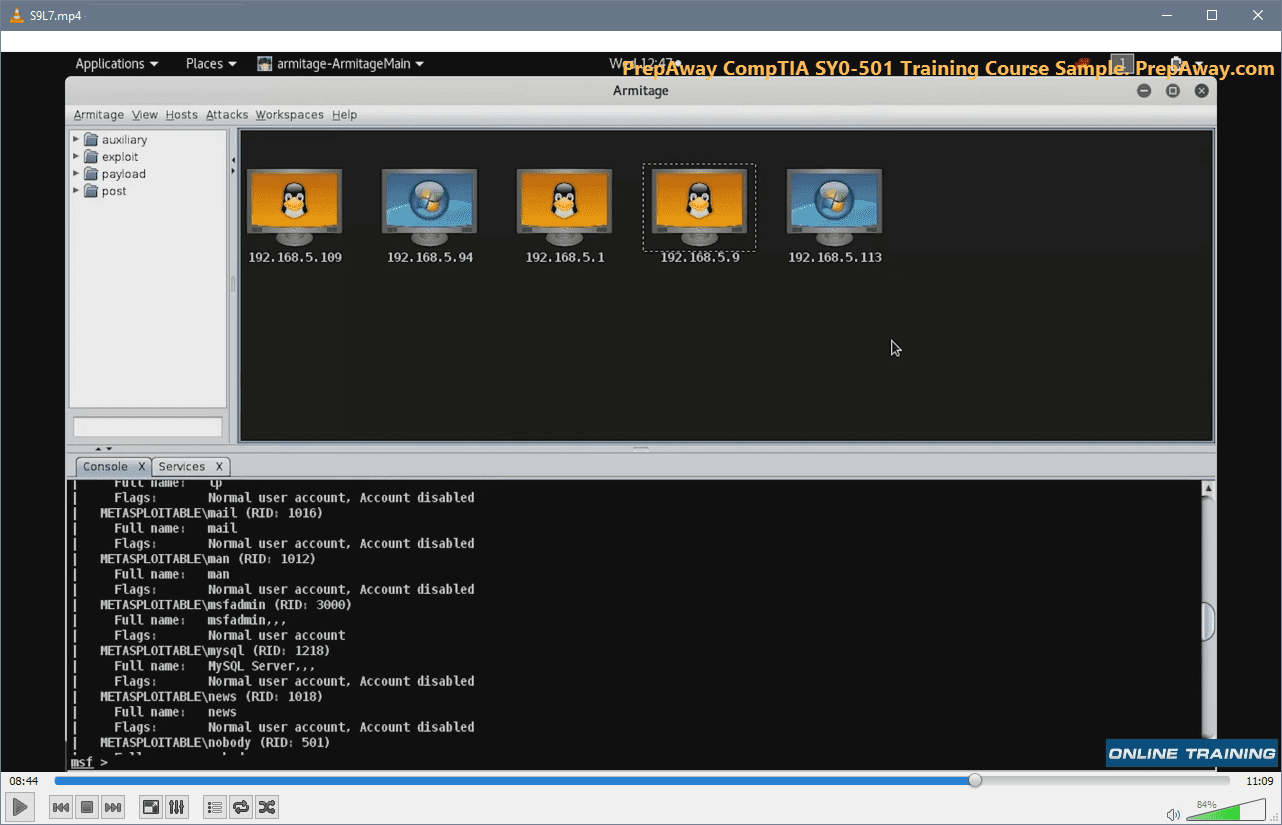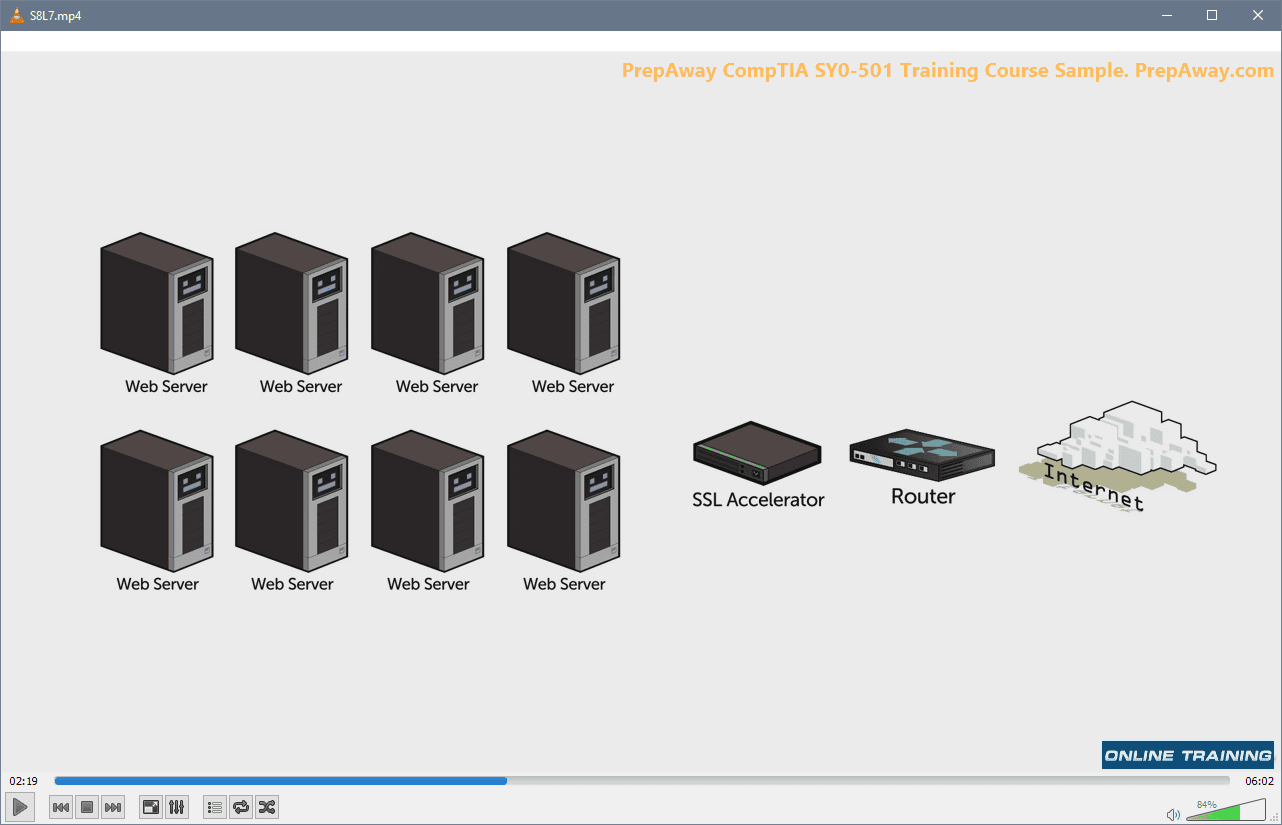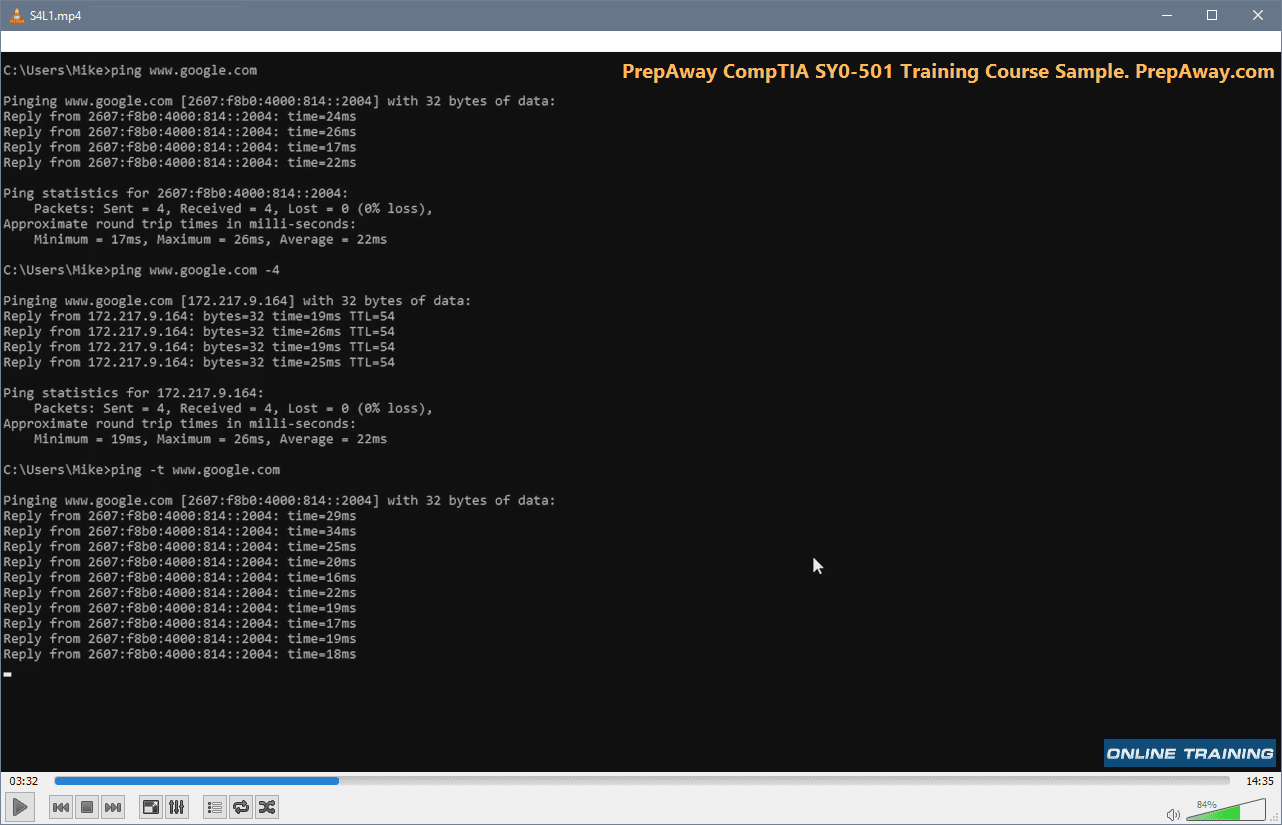- Home
- Microsoft Certifications
- PL-400 Microsoft Power Platform Developer Dumps
Pass Microsoft Power Platform PL-400 Exam in First Attempt Guaranteed!
Get 100% Latest Exam Questions, Accurate & Verified Answers to Pass the Actual Exam!
30 Days Free Updates, Instant Download!

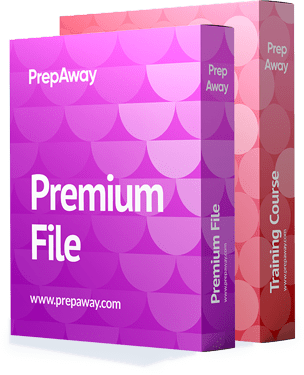
PL-400 Premium Bundle
- Premium File 418 Questions & Answers. Last update: Dec 18, 2025
- Training Course 106 Video Lectures
Last Week Results!

Includes question types found on the actual exam such as drag and drop, simulation, type-in and fill-in-the-blank.
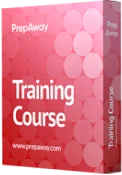
Based on real-life scenarios similar to those encountered in the exam, allowing you to learn by working with real equipment.
All Microsoft Power Platform PL-400 certification exam dumps, study guide, training courses are Prepared by industry experts. PrepAway's ETE files povide the PL-400 Microsoft Power Platform Developer practice test questions and answers & exam dumps, study guide and training courses help you study and pass hassle-free!
Beyond Basics: Navigating Advanced Power Platform with PL-400
The Power Platform Developer Associate certification validates advanced ability to design, build, test, and maintain custom business solutions using Microsoft Power Platform tools. This credential focuses on development rather than administration or design alone. Professionals who pursue it are expected to create sophisticated solutions involving Power Apps, Power Automate, Dataverse, connectors, business logic and integration with external systems. The exam tests real-world implementation rather than superficial familiarity.
Power Platform is increasingly adopted by enterprises to accelerate application delivery. Developers who can create secure, maintainable, and extensible solutions using low‑code and pro‑code techniques deliver value quickly. The PL‑400 credential demonstrates technical excellence in bridging functional requirements with scalable solution architecture.
Armed With The Right Mindset Before Preparation Begins
Preparing for PL‑400 requires understanding both platform capabilities and common enterprise scenarios. Successful developers approach it like engineers: they anticipate evolving requirements, optimize for maintainability, and design for extensibility. This means knowing when to use canvas apps versus model‑driven apps, when to extend logic via Power FX versus plugins, and how to manage performance and reuse across solutions.
The preparation mindset should reflect the platform’s hybrid nature. Power Platform combines low‑code tools like canvas apps with traditional developer tools such as restful web services, Azure Functions, custom connectors, and plugin frameworks. Understanding how to blend these tools in enterprise architecture is essential to mastering PL‑400.
Breaking Down The Core Domain Areas You Need To Master
The certification covers several core domains of technical skill. Understanding these deeply ensures readiness:
App Development With Canvas And Model‑Driven Apps. This includes UI design, security roles, form scripting, lookup relationships, and user experience optimization across app types.
Business Logic Implementation Techniques. Developers must know how to structure business rules, work with Power FX expressions, build flows with Power Automate, implement Dataverse business process flows, and design plugin code in C# when needed.
Integration And Data Modeling. This spans connecting Dataverse to external APIs, creating custom connectors, handling delegation limits, managing Batch API, working with many‑to‑many and option set tables, and optimizing data access.
Solution Management, ALM, And Performance Optimization. This domain tests packaging solutions with managed/unmanaged layers, using environment strategy, version control keys, solution upgrades, validating performance bottlenecks, and using telemetry for optimization.
Why Realistic Scenarios Matter In Preparation
The PL‑400 exam relies heavily on scenario‑based questions that mimic enterprise use cases. Each question typically presents a business challenge requiring thoughtful architecture and correct combination of Power Platform capabilities. For example, a question may ask how to automate invoice approval across multiple departments, requiring decisions on data storage, task orchestration, error handling, and delegation.
This format underscores the importance of thinking methodically: reading the scenario carefully, identifying constraints, filtering options that violate performance or delegation rules, and choosing the most maintainable solution. Practicing with scenario questions sharpens this reasoning ability faster than memorizing feature lists.
Studying Smarter Through Applied Labs And Concept Exploration
Rather than rote review, the most effective preparation involves building end‑to‑end mini‑solutions. For instance, create a canvas app that interacts with Dataverse, uses Azure Logic Apps or Power Automate for advanced orchestration, validates user input in canvas using Power FX, and logs errors to a custom entity for monitoring.
Exploring hidden platform behaviors is also critical. Learn how component framework (PCF) performance compares to custom code, how Power Automate action limits affect flow design, or how delegation warnings impact large data sets. Deep dives into these quirks expand your understanding beyond documentation and teach you how to resolve real performance issues.
Reinforcing Knowledge Through Critical Reflection And Debugging
A key differentiator between candidates is the ability to troubleshoot complex issues using tool logs and tracing. Learning to use plugin trace logs, analyze semantic caching layers, inspect Dataverse audit history, and interpret app insights telemetry can help you debug issues that typical low‑code tools obfuscate.
Practicing fault isolation—introducing exceptions, adding logging, and simulating load tests—builds confidence. Being able to explain why a particular app fails under high volume, or why a flow fails for one user role but not another, is a sign of real technical depth.
Building A Study Structure Based On Domain Dependencies
Creating a study schedule that follows logical layer dependencies helps reinforce knowledge transfer. Start with Dataverse schema and security model, then build sample canvas and model‑driven apps, layer in automation flows, and finally integrate custom code or connectors. Testing performance after each layer builds awareness of how each component affects throughput and constraints.
Focus effort proportionally by domain difficulty and weighting. Business logic and integration topics repay more investment since they appear in deeper scenario logic. Less frequent topics like user migration strategies or ALM processes should still be addressed, but with streamlined reference workflows rather than exhaustive detail.
Practicing Performance‑Based Scenarios Under Time Constraints
As the exam approaches, simulate timed question sets that include case studies. Use local environments to configure solutions quickly, search documentation efficiently, and verbalize decision logic as you go. These timed drills condition you for high‑level reasoning under pressure.
During simulation, track the time taken per question and upstream preparation per domain. Keep notes on reasoning mistakes or paused steps—these help identify gaps needing reinforcement. Repeated practice with this format builds fluency in parsing requirements, evaluating options, and selecting optimal solution patterns.
Navigating Canvas And Model-Driven Apps Through Architecture Choices
One of the first hurdles in real-world development is understanding when to use canvas versus model-driven apps. Canvas apps give maximum UI control and are suited for task-specific workflows with fine-grained user interactions. Model-driven apps, on the other hand, rely on the underlying data model and business process flows to automatically generate user interfaces, which makes them ideal for structured data management and process enforcement.
Choosing between them is more than a matter of preference. It involves user context, device type, process complexity, and performance. Understanding the internal rendering mechanism of canvas apps and the auto-generated form logic of model-driven apps is important when evaluating responsiveness and user experience. Each app type has limitations, such as the 500-record non-delegation limit in canvas apps and the restricted customization in model-driven forms.
In PL-400 scenarios, you may be presented with business needs such as creating a service request intake portal or an internal operations dashboard. Deciding the appropriate app type and justifying it with architectural reasoning is a skill that must be sharpened during preparation.
Mastering Power Automate For Enterprise-Grade Automation
Power Automate is the workflow engine that connects processes across services. It supports automated flows, instant flows, scheduled flows, and business process flows. Each has specific design intentions. Automated flows trigger based on events such as record changes. Instant flows are tied to user actions like button clicks. Scheduled flows run on a defined frequency, and business process flows guide users through multi-step procedures.
In enterprise scenarios, flows often chain multiple systems. For example, triggering a flow when a new lead is created, validating the record against an external data source, logging the outcome to Dataverse, and sending a notification. Designing such flows requires awareness of retry policies, error handling, data limits, and throttling behaviors.
Moreover, secure flows must handle connections with environment variables, service accounts, and least-privilege access patterns. A well-designed flow reduces unnecessary API calls, avoids redundant loops, and uses conditions to filter early. Understanding connectors’ premium status, authentication methods, and payload structure helps developers plan their flows effectively.
PL-400 tests your fluency in designing such flows under constraint-heavy situations, requiring decisions that balance performance, security, and maintainability.
Leveraging Dataverse As The Data Backbone
Dataverse is the common data service underlying most Power Platform solutions. It provides a structured schema, security roles, business rules, workflows, and auditing. Understanding how to model data in Dataverse is critical for creating scalable applications.
Key concepts include table relationships (one-to-many, many-to-many), alternate keys, calculated and rollup columns, option sets, and hierarchical data. Inaccurate modeling often leads to inefficient queries, delegation issues, or poor maintainability.
For instance, if a table grows beyond 100,000 records, poorly designed queries from canvas apps will fail or return partial data. Delegation warnings are a common issue where Power Apps cannot push queries to Dataverse. Developers must master filtering, sorting, and aggregation within delegation limits.
Security modeling is also a crucial aspect. Developers must configure security roles, field-level security, ownership types, and team access properly. Without this, applications risk data exposure or access errors. PL-400 expects you to know how these settings interact with app behavior, especially under impersonation or automation scenarios.
Advanced Business Logic With Plugins And Power Fx
When business requirements outgrow the simplicity of Power Automate or business rules, developers turn to plugins and Power Fx. Plugins are server-side extensions written in .NET and deployed in Dataverse pipelines. They allow precise control over synchronous and asynchronous processing and are often used for validations, data transformation, and external integration logic.
Plugins offer full access to Dataverse context, including depth, stage, and pipeline information. Misuse of plugins can lead to recursion issues or performance bottlenecks. Thus, a sound understanding of plugin registration options, execution context, and exception handling is mandatory.
Power Fx is the low-code expression language used in canvas apps. While simpler than traditional programming, it requires skill to write expressions that are both efficient and maintainable. Developers should understand how to use collections, conditional logic, lookup chaining, and error functions.
In the exam, you may encounter requirements like calculating a dynamic discount based on tiered logic or transforming a text field based on multiple input values. These challenges test your ability to apply Power Fx or plugin logic appropriately.
Enhancing Performance With Proactive Tuning Practices
Enterprise-grade apps require more than just correct functionality. They must perform under load, scale with demand, and deliver consistent user experience. Performance tuning is a deep topic that includes app responsiveness, automation latency, and data access throughput.
Canvas apps can slow down due to excessive data loading, unoptimized formulas, or control overload. Developers should minimize visible controls, cache data in collections, and avoid non-delegable queries. Model-driven apps benefit from optimized form design and plugin efficiency.
Power Automate performance tuning includes reducing flow steps, using parallel branches, and catching errors early. Flow analytics should be used to trace latency sources and failure rates. In Dataverse, using alternate keys for lookup, bulk operations for updates, and pre-operation triggers for validation improves performance.
The PL-400 exam may include questions on resolving latency in an approval process or minimizing load times for a large user base. Being able to recommend configuration changes or redesigning workflows is a key skill assessed.
Understanding Application Lifecycle Management With Solutions
Solutions are containers for components like apps, flows, tables, plugins, and more. They are essential for deploying changes across environments. Understanding how to manage solutions—managed vs unmanaged, versioning, dependencies, patching, and layering—is fundamental.
Unmanaged solutions are used during development, while managed ones are deployed to production. Improper use of unmanaged solutions in production can cause overwrite conflicts or version mismatches. Solution layering defines how updates affect existing components. For instance, updating a field in a patch might not override the base solution unless explicitly defined.
Application lifecycle management also involves using environment strategies, pipelines, and version control. Developers must know how to package components, export/import solutions, and deal with conflicts. The exam may ask you how to deploy a plugin update without disrupting a live system or how to handle solution import failures.
Ensuring Security And Compliance Across All Layers
Security in Power Platform is multilayered. It includes app-level security, data-level security, API access, and flow ownership. Developers must understand how security roles, business units, teams, and field-level permissions work together.
Canvas apps often suffer from incorrect delegation of permissions, where users access data they shouldn’t or face runtime errors due to missing privileges. Similarly, Power Automate flows running under a developer’s context can fail in production if that user is removed. Using service accounts and proper environment variables ensures continuity.
In Dataverse, ownership of records affects access. Developers must decide when to use user-owned tables versus organization-owned tables. Field-level security allows masking sensitive fields, and auditing helps track changes. These features are especially relevant for regulated industries where compliance is a concern.
The PL-400 exam frequently includes scenarios where security misconfigurations cause data breaches or functional failure. Knowing how to diagnose and correct such issues is vital.
Navigating Error Handling And Resilience In App Design
Error handling is a crucial part of development that ensures apps fail gracefully. Canvas apps use IfError, Notify, and error collections to catch issues. Flows use Configure Run After and scope actions to handle failures. Plugins use try-catch blocks and throw custom exceptions to guide users.
Resilience includes designing retry mechanisms, backing off from throttled APIs, and logging failures for future inspection. Good design includes telemetry to capture error context, making post-deployment diagnostics easier.
During the exam, you may be asked how to handle a failed file upload in Power Automate or how to ensure a plugin doesn’t crash the transaction pipeline. These questions require a defensive programming mindset.
Structuring Solutions For Maintainability And Extensibility
The true test of a developer’s skill is not just what they can build today, but how easily someone else can extend or maintain it in the future. Well-structured apps use naming conventions, documentation, reusable components, and modular logic.
In canvas apps, reuse comes from components and collections. Flows should use child flows to encapsulate logic. Plugins should be split across multiple classes and registered to stages carefully. Custom connectors should be documented with input/output contracts.
Maintainability also means avoiding hard-coded values, embedding business logic in multiple layers, and duplicating schemas. Using environment variables, references, and constants helps with environment migration.
These best practices are often tested indirectly through scenario-based questions that ask which design approach supports growth or accommodates future changes with minimal rework.
Understanding Solution Architecture Principles In Power Platform Development
A certified Power Platform developer is expected to go beyond app building and embrace the architectural mindset. Solution architecture in this context means designing a collection of components—apps, flows, data models, custom code, integrations—that together fulfill long-term business goals. This requires understanding trade-offs between usability, maintainability, scalability, and performance.
For instance, when creating a model-driven app to manage customer service tickets, the solution must consider how the Dataverse tables are structured, how role-based access will function, how automation is triggered when tickets are updated, and whether any part of the logic will require plugins for efficiency. A strong PL-400 candidate will evaluate whether to bundle these features into a single managed solution or separate them by functionality for better lifecycle management.
Making Smart Choices Between Canvas Apps And Model-Driven Apps
A key decision in every solution design is the selection between canvas and model-driven app types. Canvas apps offer pixel-level control and are ideal for task-specific apps with unique user interfaces. Model-driven apps, on the other hand, are driven by data and schema relationships and work best for structured business applications with complex data models.
While preparing for the PL-400 exam, one must understand how to balance these app types. For example, a field sales team might benefit from a mobile-friendly canvas app for quick data entry, whereas internal operations might rely on a model-driven app for managing multi-entity workflows. The exam often tests the ability to align app types with user needs and back-end architecture.
Working With Power FX And Advanced Formulas
Power FX is the declarative language used in canvas apps and some other Power Platform components. Mastery of this language is essential for creating responsive, context-aware applications. PL-400 candidates must be able to write and debug complex expressions that calculate values, apply filters, manipulate collections, and dynamically set properties.
Common scenarios include formatting dates for display, applying conditional formatting based on data values, filtering data sets based on multiple user inputs, or customizing error messages for validation. Understanding how Power FX interacts with connectors and how delegation affects performance is vital for building scalable apps.
Enhancing Logic With Plugins, Business Rules, And Cloud Flows
Automation in Power Platform can be achieved through various tools. Business rules provide simple logic without writing code, typically used in model-driven apps. Plugins offer deeper server-side logic written in .NET, triggered during Dataverse operations such as create or update. Cloud flows, built with Power Automate, can orchestrate actions across systems and services.
The exam will assess when each tool should be used. For example, a business rule may be suitable for hiding a field on a form based on user input, but a plugin might be necessary for complex validation involving multiple tables. Cloud flows can be used to send email notifications or call external APIs. Candidates must understand where to place logic to balance performance, security, and maintainability.
Using Environment Variables, Connection References, And Secrets
Solution configuration is a critical topic in Power Platform development. Developers often need to move apps and flows between environments—development, testing, and production. This requires decoupling hard-coded values and using configurable items like environment variables and connection references.
For example, a flow that writes to a SharePoint list should not contain a hard-coded URL. Instead, the target site should be defined through an environment variable that can be set differently in each environment. The PL-400 exam tests knowledge of how to manage these variables inside managed solutions and how to ensure that flows can connect securely across environments without exposing credentials.
Optimizing App Performance And Delegation
One of the most misunderstood aspects of canvas app development is delegation. Delegation occurs when a data operation is executed on the server rather than retrieving all records to the client. Without delegation, apps may slow down or display incomplete results when working with large datasets.
For example, using non-delegable functions like Len(Filter(...)) can lead to incorrect record counts if the underlying data source exceeds delegation limits. Candidates preparing for PL-400 must recognize which operations are delegable for Dataverse, SharePoint, or SQL Server connectors, and learn techniques to rewrite logic for performance.
In addition to delegation, developers should understand how to reduce load time by limiting control visibility, reusing components, loading data on demand, and caching frequent queries in collections.
Understanding Security Roles, Table Permissions, And User Access
Security in Power Platform is layered and includes user roles, table permissions, field-level security, and sharing models. A developer needs to ensure that users only access what they are authorized to see or modify. This includes configuring security roles, understanding the hierarchy of privileges, and setting up business units if needed.
For example, if a user creates a record but cannot later edit it, it may be due to a missing write privilege or because the record is owned by a different business unit. The PL-400 exam includes scenarios where access control must be implemented correctly, especially when sensitive data is involved.
Developers must also account for how impersonation works in flows and plugins, and how actions performed by service accounts appear in audit logs.
Developing And Using Custom Connectors For External Integration
Not all required integrations are available as built-in connectors. Custom connectors allow developers to wrap REST APIs into reusable components that behave like native connectors. The process includes defining endpoints, authentication schemes, request and response schemas, and testing connections.
This becomes important in enterprise scenarios where Power Platform must interact with legacy systems, third-party services, or external identity providers. A PL-400 certified developer must be comfortable building and debugging these connectors, ensuring secure communication and compliance with enterprise integration policies.
Working With Power Apps Component Framework (PCF)
The Power Apps Component Framework allows developers to create custom components using HTML, CSS, and TypeScript. These components can be embedded into canvas or model-driven apps, providing enhanced visualizations or custom controls not possible with native components.
Examples include sliders, signature pads, or charting tools tailored to business needs. While PCF development is not required for all candidates, understanding its purpose, deployment process, and lifecycle management is part of the exam.
Candidates should understand when PCF provides value over traditional controls, and how to package and deploy these components using solution layer
Using The Dataverse Web API For Advanced Customization
The Dataverse Web API enables interaction with the platform from external systems using HTTP protocols. It supports create, read, update, delete operations, batch processing, filtering, and relationship navigation.
Developers may use it to build integrations in Azure Functions, external apps, or microservices that synchronize data or automate processes. The exam may include scenarios requiring a basic understanding of constructing HTTP requests, handling authentication, and parsing JSON responses.
This layer of extensibility separates platform developers from power users, demonstrating their ability to integrate Power Platform into larger enterprise ecosystems.
Employing Application Lifecycle Management (ALM) Practices
ALM in Power Platform involves tracking solution versions, managing development environments, handling code updates, and deploying solutions through controlled pipelines. Developers are expected to use tools such as solution layering, source control integration, build automation, and testing frameworks.
For example, one might develop a canvas app and Dataverse table in a development environment, export the solution as managed, and import it into test and production environments using deployment scripts. Knowing how to structure solutions, roll back changes, and apply hotfixes without breaking dependencies is a critical part of passing the PL-400 exam.
Diagnosing Failures With Monitoring And Logging Tools
Power Platform provides built-in tools for tracking application behavior and diagnosing issues. This includes plugin trace logs, flow run histories, Dataverse audit logs, and Power Apps Monitor.
Candidates must be able to interpret these logs to identify root causes of issues. For example, a cloud flow might fail due to a missing connection or schema mismatch in a JSON payload. Plugins may time out due to long-running logic or improper service instantiation.
A diagnostic mindset is essential for real-world development and is tested in the exam through troubleshooting-based scenarios.
Anticipating Future Changes In The Platform
Microsoft Power Platform evolves rapidly, introducing new features, deprecating old ones, and improving scalability. A certified developer is expected to monitor these trends and adjust designs accordingly. This may include migrating from deprecated connectors, adapting to new licensing boundaries, or redesigning apps to use newly released features like modern controls.
Future readiness also includes understanding governance models, environment strategy, and how to align development with organization-wide policies. The PL-400 exam rewards those who can architect durable solutions that remain functional through platform changes.
Translating PL-400 Skills Into Real-World Impact
The practical value of the PL-400 certification begins once the knowledge is used to solve business challenges. A certified developer is not only expected to build apps and flows but to improve processes, reduce manual effort, and enable rapid innovation through automation and data integration. In organizations where digital transformation is a strategic priority, PL-400 certified professionals often become key contributors to these initiatives.
This transition from developer to problem solver requires applying what was learned during certification in dynamic, often ambiguous environments. It also means working closely with business stakeholders, understanding operational workflows, and selecting the right tools to deliver reliable, maintainable solutions.
Leading Low-Code Projects In Cross-Functional Teams
Low-code development is rarely a solo activity. Effective Power Platform developers work within cross-functional teams, often made up of citizen developers, IT admins, UX designers, data analysts, and architects. A PL-400 certified professional is typically tasked with translating business requirements into technical designs, mentoring less technical colleagues, and ensuring security and governance standards are followed.
This role includes choosing between canvas and model-driven apps, recommending automation options, identifying data model improvements, and setting boundaries for what should and should not be built with Power Platform. These responsibilities require clear communication, empathy, and the ability to educate stakeholders on what the platform can realistically deliver.
Building End-To-End Solutions Across Power Platform Pillars
Although PL-400 focuses primarily on Power Apps and Power Automate, real-world implementations often touch the entire ecosystem, including Power BI, Power Virtual Agents, and Dataverse. A complete solution might include a model-driven app that captures customer requests, flows that trigger approval processes, dashboards that track response times, and a chatbot that handles routine inquiries.
Mastery of PL-400 topics allows developers to architect these end-to-end solutions while understanding their technical boundaries. For example, ensuring that data refresh schedules in Power BI align with real-time updates in Dataverse, or integrating a virtual agent with a flow that queries a third-party service using a custom connector.
Extending Capabilities With Custom Code When Needed
Even in a low-code environment, there are times when traditional development is required. PL-400 developers should know when to drop into custom code to extend functionality, enhance performance, or improve usability. This includes writing plugins in .NET for server-side logic, developing Power Apps Component Framework controls in TypeScript, or calling external APIs using custom connectors.
The ability to switch between low-code and code-first methods gives developers flexibility and positions them as versatile contributors within enterprise teams. It also means being aware of the impact that custom code can have on maintainability, performance, and solution upgrades.
Becoming A Governance Advocate Within The Organization
As the use of Power Platform grows in organizations, governance becomes critical. PL-400 certified developers can help shape and enforce best practices for solution development, data access, app deployment, and security. This includes using managed solutions, applying environment variables, adhering to naming conventions, and auditing flow usage.
Governance is not about restricting innovation but guiding it. Developers who understand the platform’s limitations and risks can help business units scale responsibly. This includes recommending proper roles and permissions, educating users about data sensitivity, and participating in environment strategy discussions.
Using ALM Techniques To Stabilize Deployment Pipelines
Many organizations fail to take full advantage of Power Platform’s lifecycle tools. A PL-400 certified developer can lead the adoption of application lifecycle management practices that improve stability, enable faster releases, and support rollback when needed. This involves using version-controlled solutions, automating deployments with pipelines, and documenting dependencies.
The ability to package apps, flows, and environment variables into repeatable releases is a valuable skill. It reduces errors, increases confidence, and allows developers to focus on innovation rather than troubleshooting broken solutions during go-live events.
Monitoring Solutions For Health And Performance
Applications built with Power Platform are expected to run reliably, scale under load, and respond quickly. PL-400 developers can implement monitoring using built-in tools such as the Power Apps Monitor, plugin trace logs, flow run history, and Dataverse analytics. This proactive visibility helps teams identify and resolve performance issues before users report them.
Real-world scenarios include optimizing flow triggers to reduce unnecessary executions, identifying bottlenecks in canvas app load times, or tuning plugin performance by reducing service calls. These capabilities separate reactive support teams from proactive development leaders.
Exploring Advanced Scenarios With Power Platform And Azure
The integration between Power Platform and Azure opens up advanced development opportunities. PL-400 certified professionals are well-positioned to explore these use cases. Examples include calling Azure Functions from cloud flows, storing large files in Azure Blob Storage, or leveraging Azure Key Vault for secure secrets management.
This hybrid approach allows developers to use Power Platform for front-end and workflow orchestration while offloading intensive processing or specialized services to Azure. As organizations modernize their systems, this integration layer becomes a key enabler for innovation.
Collaborating With Architects On Enterprise-Scale Solutions
Large-scale implementations of Power Platform require architectural input. PL-400 developers must collaborate with enterprise architects to align solutions with broader IT strategies. This includes considerations around tenant boundaries, compliance, identity management, and data residency.
In these engagements, developers bring platform expertise while architects bring strategic direction. The goal is to ensure that Power Platform becomes part of the enterprise architecture, not a shadow IT tool. Developers who can participate in these discussions gain influence and credibility beyond their immediate teams.
Contributing To A Center Of Excellence Model
Many organizations create a center of excellence to promote platform adoption, standardize practices, and support community-led growth. PL-400 developers can contribute by developing templates, reusable components, naming standards, and code samples.
They can also deliver internal training sessions, create documentation, and assist with solution reviews. This positions them as leaders in the platform community and ensures that high-quality solutions are developed consistently across teams.
Using Data To Prove Return On Investment
Business value is often measured in time saved, errors reduced, or revenue enabled. Certified Power Platform developers can collect metrics from Dataverse, Power BI, and usage analytics to demonstrate the impact of their solutions. This might include tracking the reduction in manual tasks, speeding up approval times, or increasing customer satisfaction scores.
These metrics not only validate the investment in low-code platforms but also position developers as contributors to business success rather than just technical resources.
Staying Up To Date With Platform Changes
Power Platform evolves rapidly. New features, deprecated components, and licensing changes are frequent. PL-400 certified developers must build a habit of continuous learning. This includes reading release notes, participating in platform preview programs, and experimenting with new components.
Staying current ensures that developers can take advantage of improvements and avoid building solutions with deprecated functionality. It also reinforces their role as trusted advisors to teams relying on the platform.
Transitioning Into Solution Architect Roles
As developers mature in their careers, many pursue roles that focus more on solution architecture than hands-on development. The knowledge gained through PL-400 serves as a foundation for this progression. Architects need to understand data modeling, automation strategies, integration options, security boundaries, and deployment planning—all topics covered in the PL-400 curriculum.
Transitioning into this role requires expanding from feature building to strategic planning. Developers should look for opportunities to lead initiatives, mentor others, and participate in architectural review processes.
Combining PL-400 With Other Certifications
PL-400 is powerful on its own, but its value multiplies when combined with other certifications. Developers might pair it with certifications in data analytics, security, Azure development, or solution architecture. This cross-skilling makes them valuable in hybrid environments where Power Platform interacts with multiple systems and teams.
For example, combining Power Platform development skills with Azure identity knowledge allows a developer to build more secure and scalable solutions. Combining with Power BI allows for tighter integration between analytics and business processes.
Cultivating A Developer Mindset In A Low-Code World
The most effective Power Platform developers do not think like tool users—they think like engineers. This means designing for failure, planning for scale, writing modular components, and documenting everything. Even in a visual development environment, code hygiene, testing discipline, and version control are essential.
Certified developers can bring these engineering practices into low-code teams, raising the quality of solutions and increasing organizational trust in the platform.
Final Words
The PL-400 certification opens the door to a specialized role in the evolving world of low-code enterprise development. It validates the skills required to build secure, scalable, and maintainable business applications using Power Platform tools. However, the certification is only the beginning.
What truly elevates a developer’s impact is how they apply these skills to real-world challenges, contribute to platform governance, collaborate across teams, and lead through complexity. The value of PL-400 lies not just in technical mastery, but in the ability to drive business transformation through thoughtful, well-architected solutions.
Power Platform continues to evolve, and with it, the role of the developer. Those who remain curious, pragmatic, and customer-focused will continue to grow—not just in technical ability but in strategic importance within their organizations.
Microsoft Power Platform PL-400 practice test questions and answers, training course, study guide are uploaded in ETE Files format by real users. Study and Pass PL-400 Microsoft Power Platform Developer certification exam dumps & practice test questions and answers are to help students.
- AZ-104 - Microsoft Azure Administrator
- DP-700 - Implementing Data Engineering Solutions Using Microsoft Fabric
- AZ-305 - Designing Microsoft Azure Infrastructure Solutions
- AI-102 - Designing and Implementing a Microsoft Azure AI Solution
- AI-900 - Microsoft Azure AI Fundamentals
- AZ-900 - Microsoft Azure Fundamentals
- PL-300 - Microsoft Power BI Data Analyst
- MD-102 - Endpoint Administrator
- AZ-500 - Microsoft Azure Security Technologies
- SC-200 - Microsoft Security Operations Analyst
- SC-300 - Microsoft Identity and Access Administrator
- MS-102 - Microsoft 365 Administrator
- SC-401 - Administering Information Security in Microsoft 365
- AZ-700 - Designing and Implementing Microsoft Azure Networking Solutions
- AZ-204 - Developing Solutions for Microsoft Azure
- DP-600 - Implementing Analytics Solutions Using Microsoft Fabric
- SC-100 - Microsoft Cybersecurity Architect
- MS-900 - Microsoft 365 Fundamentals
- AZ-400 - Designing and Implementing Microsoft DevOps Solutions
- PL-200 - Microsoft Power Platform Functional Consultant
- AZ-800 - Administering Windows Server Hybrid Core Infrastructure
- SC-900 - Microsoft Security, Compliance, and Identity Fundamentals
- AZ-140 - Configuring and Operating Microsoft Azure Virtual Desktop
- PL-600 - Microsoft Power Platform Solution Architect
- AZ-801 - Configuring Windows Server Hybrid Advanced Services
- PL-400 - Microsoft Power Platform Developer
- DP-300 - Administering Microsoft Azure SQL Solutions
- MS-700 - Managing Microsoft Teams
- PL-900 - Microsoft Power Platform Fundamentals
- MB-280 - Microsoft Dynamics 365 Customer Experience Analyst
- DP-900 - Microsoft Azure Data Fundamentals
- DP-100 - Designing and Implementing a Data Science Solution on Azure
- MB-800 - Microsoft Dynamics 365 Business Central Functional Consultant
- GH-300 - GitHub Copilot
- MB-330 - Microsoft Dynamics 365 Supply Chain Management
- MB-310 - Microsoft Dynamics 365 Finance Functional Consultant
- MB-820 - Microsoft Dynamics 365 Business Central Developer
- MB-920 - Microsoft Dynamics 365 Fundamentals Finance and Operations Apps (ERP)
- MB-230 - Microsoft Dynamics 365 Customer Service Functional Consultant
- MB-910 - Microsoft Dynamics 365 Fundamentals Customer Engagement Apps (CRM)
- MS-721 - Collaboration Communications Systems Engineer
- MB-700 - Microsoft Dynamics 365: Finance and Operations Apps Solution Architect
- GH-900 - GitHub Foundations
- PL-500 - Microsoft Power Automate RPA Developer
- MB-335 - Microsoft Dynamics 365 Supply Chain Management Functional Consultant Expert
- GH-200 - GitHub Actions
- MB-500 - Microsoft Dynamics 365: Finance and Operations Apps Developer
- MB-240 - Microsoft Dynamics 365 for Field Service
- DP-420 - Designing and Implementing Cloud-Native Applications Using Microsoft Azure Cosmos DB
- AZ-120 - Planning and Administering Microsoft Azure for SAP Workloads
- GH-100 - GitHub Administration
- GH-500 - GitHub Advanced Security
- DP-203 - Data Engineering on Microsoft Azure
- SC-400 - Microsoft Information Protection Administrator
- MB-900 - Microsoft Dynamics 365 Fundamentals
- AZ-303 - Microsoft Azure Architect Technologies
- 98-383 - Introduction to Programming Using HTML and CSS
- MO-201 - Microsoft Excel Expert (Excel and Excel 2019)
- 98-388 - Introduction to Programming Using Java
Purchase PL-400 Exam Training Products Individually


Why customers love us?
What do our customers say?
The resources provided for the Microsoft certification exam were exceptional. The exam dumps and video courses offered clear and concise explanations of each topic. I felt thoroughly prepared for the PL-400 test and passed with ease.
Studying for the Microsoft certification exam was a breeze with the comprehensive materials from this site. The detailed study guides and accurate exam dumps helped me understand every concept. I aced the PL-400 exam on my first try!
I was impressed with the quality of the PL-400 preparation materials for the Microsoft certification exam. The video courses were engaging, and the study guides covered all the essential topics. These resources made a significant difference in my study routine and overall performance. I went into the exam feeling confident and well-prepared.
The PL-400 materials for the Microsoft certification exam were invaluable. They provided detailed, concise explanations for each topic, helping me grasp the entire syllabus. After studying with these resources, I was able to tackle the final test questions confidently and successfully.
Thanks to the comprehensive study guides and video courses, I aced the PL-400 exam. The exam dumps were spot on and helped me understand the types of questions to expect. The certification exam was much less intimidating thanks to their excellent prep materials. So, I highly recommend their services for anyone preparing for this certification exam.
Achieving my Microsoft certification was a seamless experience. The detailed study guide and practice questions ensured I was fully prepared for PL-400. The customer support was responsive and helpful throughout my journey. Highly recommend their services for anyone preparing for their certification test.
I couldn't be happier with my certification results! The study materials were comprehensive and easy to understand, making my preparation for the PL-400 stress-free. Using these resources, I was able to pass my exam on the first attempt. They are a must-have for anyone serious about advancing their career.
The practice exams were incredibly helpful in familiarizing me with the actual test format. I felt confident and well-prepared going into my PL-400 certification exam. The support and guidance provided were top-notch. I couldn't have obtained my Microsoft certification without these amazing tools!
The materials provided for the PL-400 were comprehensive and very well-structured. The practice tests were particularly useful in building my confidence and understanding the exam format. After using these materials, I felt well-prepared and was able to solve all the questions on the final test with ease. Passing the certification exam was a huge relief! I feel much more competent in my role. Thank you!
The certification prep was excellent. The content was up-to-date and aligned perfectly with the exam requirements. I appreciated the clear explanations and real-world examples that made complex topics easier to grasp. I passed PL-400 successfully. It was a game-changer for my career in IT!

